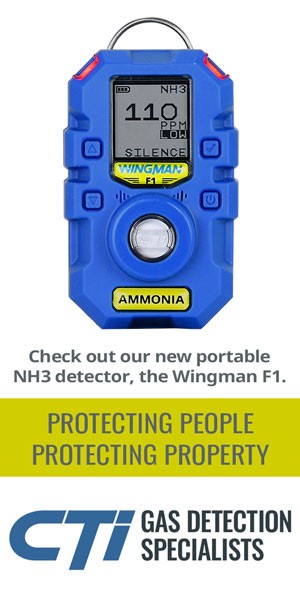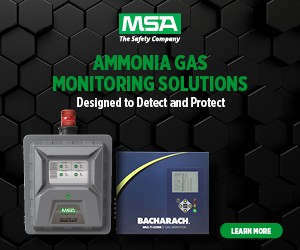IIAR CO2 Committee Releases Handbook
“This handbook will be invaluable to members and non-members alike. It provides a solid basis for individuals to become familiar with current practices,” said Brian Marriott, co-author of the handbook and IIAR CO2 Committee Chairman. “This revised issue puts a greater focus on transcritical applications. In addition, the original handbook did not reflect several important new pieces of data, and it was felt that it was time to update it.”
CO2 industrial refrigeration systems have experienced a renaissance in recent years, as the usage of halocarbon products such as freon have declined, thanks to regulatory pressures to address environmental concerns.
“There’s been a switch back to natural refrigerants, which has put CO2 back in the spotlight,” said CO2 Handbook Co-Author, Jeff Welch. “Our approach was not to make this revision into ‘Refrigeration 101.’ People reading this handbook understand industrial refrigeration. Its purpose is to show members what’s different and how they can deal with it. It points out the unique requirements of CO2 and provides a pathway to navigate through them.”
The handbook is divided into four sections: data, design, equipment and post-installation. Chapters examine such topics as thermodynamic properties, safety, system types, system designs, evaporators, pressure boosting equipment, condensers, gas coolers and controls.
Among the major additions to the revised handbook is the inclusion of complete thermodynamic property tables in both Inch-Pound and System International units. Other tables show various required pipe strengths as calculated per ASME Standard B 31.5 methodology.
A PH diagram produced by the National Institute of Standards and Technology (NIST) is also included, displaying how CO2 behaves. It defines areas that are liquid, solid, vapor and supercritical. Originally produced by NIST in black-and-white, a graphic designer was brought in to add color, resulting in a more descriptive diagram.
“In this edition of the CO2 handbook we’re drilling down a little deeper to provide more system design detail,” Welch said. “For example, there is a chapter on pipe strength that wasn’t included previously. Tables show different pipes that are required for different designs, for both carbon steel and stainless steel. There is also a detailed chapter on system evacuation, where you place a vacuum on it to remove the moisture and impurities before you charge the system with CO2 .”
For those who have already installed CO2 systems, the handbook provides wide-ranging design information to help wade through issues and resolve problems. “Hopefully this handbook will give contractors and designers the needed resources,” Welch said.
The IIAR has long been a proponent of all-natural refrigerants, he added. “We think that this update provides as much design information as we could compile from the industry, and it will be of great service to our members,” he said. “Each chapter stands alone, and as more information becomes available we will include addendums. The handbook is a consolidation of the 2010 handbook, but with a great deal more new information added.”











